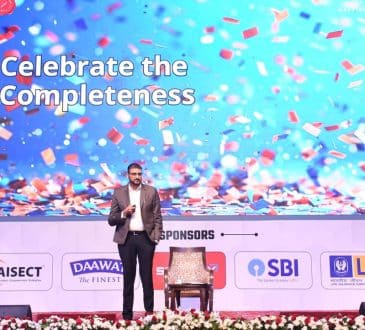Using AI to Expand Thought Leadership in Your Organization

When an organization is seen as a thought leader, it is known for what it knows. The C-Suite must take responsibility for thought leadership to achieve this, but now with artificial intelligence (AI), that job is easier: AI gives you many more opportunities to harvest unique thinking from throughout your organization.
The 2024 Edelman-LinkedIn B2B Thought Leadership Impact Report said that 86% of decision-makers are more likely to engage with companies offering consistently high-quality thought leadership.
But where that thinking comes from matters: In the end, relying solely on C-suite executives for insights can limit an organization’s potential.
The wise CEO is not threatened by the thought of widening the search space, but instead sees it as an opportunity to tap vast reservoirs of innovative ideas that often reside deeper within an organization.
Managed right and with the help of AI, the company’s diverse views on things that matter in the niche can be surfaced and developed into thought leadership by skilled editorial professionals.
And, as your subject-matter experts (SMEs) become more adept at articulating their insights in an accessible way, your organization can become highly skilled at turning complex ideas into engaging narratives that resonate with broader audiences. That’s a skill that is necessary in many areas, not just thought leadership.
Finding Hidden Idea Treasure with AI
While senior executives bring invaluable strategic vision, employees across various levels often possess unique insights grounded in day-to-day operations and customer interactions. These perspectives can significantly enhance thought leadership content, making it more relevant and practical.
According to the Edelman-LinkedIn report, 50% of organizations cite under-resourcing as a major barrier to effective thought leadership, but they may not have gotten AI to do a lot of the heavy lifting to find potential contributors and ideas beyond the executive suite.
If you provide ideation structures for your experts and encourage employees to view their experiences and observations as valuable contributions, your organization can become a testing ground for new ideas and approaches in ways that don’t distract too much from core business.
Strategy 1: Idea Harvesting with AI-driven Analysis
For starters, AI can be used to analyze chatter on platforms where employees can submit and discuss ideas. Trained properly, the AI can identify submissions for relevance and potential impact, and it can identify key trends and innovative concepts. This democratizes idea generation and ensures that valuable insights are not missed.
To turn this into thought-leadership content is the second step after the analysis.
Skilled writers armed with the analysis will be able to generate story ideas and content plans from the analysis. They’ll also know how to help the forward-looking thinkers who have been identified to articulate their intellectual property (IP). That’s when the writer serves as an ideas coach to help the subject-matter expert get that fresh IP, new product or service idea, or story idea onto paper.
An ideas coach provides a structured environment for brainstorming, capturing, and developing ideas, ensuring that the output aligns with the organization’s strategic goals and resonates with its audience.
Setting this up doesn’t have to be a big endeavor or cost a lot: It involves designing a process, having the right editorial talent on board, ensuring access to the analysis and making sure you have a system to track key ideas as they’re debated, developed or, potentially, put to rest.
Strategy 2: Sentiment Analysis and Trend Identification for Content Plans
Second, AI tools can analyze internal communications, social media, and customer feedback to identify emerging trends and sentiments. This data can inform thought leadership content, ensuring it addresses current issues and resonates with audiences. For example, AI can sift through large volumes of customer interactions to pinpoint common pain points or emerging needs.
With a thought-leadership content creation program in place, this insight can be used to develop articles and keep a steady stream of interesting story ideas coming to keep comms, marketing and business development happy.
Strategy 3: Creativity-Ensured AI-Written Content
Finally, AI-powered writing assistants can help in drafting and refining thought leadership pieces, making it easier for employees at all levels to contribute.
These tools can suggest edits, ensure consistency in tone and style, and even help in structuring arguments more effectively. This not only speeds up the content creation process but also raises the overall quality of the writing.
Nowadays, you can buy SaaS platforms that enable this.
But here’s a BIG warning: These articles can quickly become formulaic and generic and actually get in the way of your organization’s thought leadership.
Thought leadership is about gaining trust. Spamming your audiences leads to the opposite reaction: They lose interest and look elsewhere for fresh thinking and help solving their problems.
More publishing is not the goal.
The goal is to publish more unique ideas. To do that, the experts in the firm must be introduced to journalistic idea-finding and writing styles.
The creativity of the output now depends on the front end of the idea-creation process.
The AI can write up a nice sounding article. It’s up to your firm to get the freshest thinking into that article. That’s where training in thought-leadership writing, as well as ideas coaching, can help.
Harvard Alumni Entrepreneurs offers this through our company to their members who are subject-matter experts and need to position themselves as thought leaders.
It is an ongoing idea incubator that provides structure, allowing experts to devote a manageable amount of time each week to idea creation and content writing.
The result for the C-Suite?
Senior leaders will have their thinking challenged, create a healthy conversation within the organization and may soon have an interesting pipeline of new ideas for business development.
In the end, using AI in thought leadership not only amplifies the range of insights but also enhances the relevance and impact of the content.
By democratizing the thought leadership process and incorporating AI-driven tools, CEOs can ensure that their organizations’ voices are as diverse and dynamic as the challenges they seek to address.
This inclusive and technologically-driven approach will position companies as leaders not just in their industries but in the broader marketplace of ideas.
Written by Rhea Wessel.
Have you read?
World’s Best Countries To Invest In Or Do Business.
World’s Most Startup-Friendly Countries.
World’s Best Countries For Quality of Life.
Largest Economies Europe In 2024.
GDP of the BRICS countries (2000 to 2028).
Bring the best of the CEOWORLD magazine's global journalism to audiences in the United States and around the world. - Add CEOWORLD magazine to your Google News feed.
Follow CEOWORLD magazine headlines on: Google News, LinkedIn, Twitter, and Facebook.
Copyright 2025 The CEOWORLD magazine. All rights reserved. This material (and any extract from it) must not be copied, redistributed or placed on any website, without CEOWORLD magazine' prior written consent. For media queries, please contact: info@ceoworld.biz








